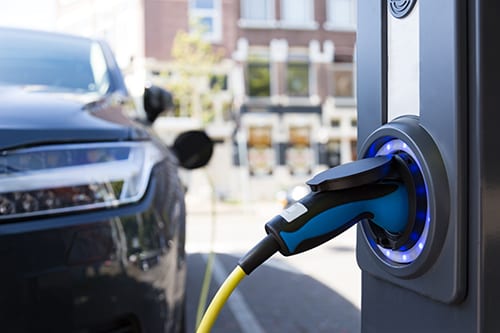 By investing in utility electric vehicle programs, power companies can advance and expand plug-in charging infrastructure across the country and experience long-term revenue growth from the subsequent electricity sales.
By investing in utility electric vehicle programs, power companies can advance and expand plug-in charging infrastructure across the country and experience long-term revenue growth from the subsequent electricity sales.
For more than a century, vehicles have largely operated on oil and the internal combustion engine, but today, electric vehicle (EV) sales are climbing. More and more consumers are turning to this clean, renewable and increasingly cost effective option, which is why meeting demand by building the right charging infrastructure is worth considering.
 5 benefits of investing in utility electric vehicle programs
5 benefits of investing in utility electric vehicle programs
Here are some of the potential benefits of investing in EV charging infrastructure and related programs:
- Grow electric demand and attract more consumers. By investing in utility electric vehicle programs, power companies can attract new, loyal and, on average, higher-earning customers. To attract these consumers, utilities can learn more about them in strategic ways, such as through an EV-focused mobile app. Additionally, utilities can create more customer incentives. For example, customers who charge their vehicles during off-peak times of the day (where there is a lower demand for electricity) could receive a discount.
- Discover new revenue opportunities. Charging stations can keep customers at a specific location for a longer period of time, giving utilities the chance to generate additional revenue through on-site advertising and per-charge pricing.
- Meet green goals and be seen as environmentally friendly. Helping to lower greenhouse gas emissions is something many consumers will appreciate.
- Help drive education and innovation. Many people don’t know much about electric vehicles and their benefits. Utilities can help lead the charge by providing educational opportunities.
- Alleviate “range anxiety.” This is the fear of running out of charge with no charge station in sight.
While some states have started requiring electric utilities to add EV charging stations to their infrastructure portfolio, other power companies have made the move on their own. Many of them don’t want to miss out on this emerging market, which they know is also in the sights of other industries.
Related posts
Utility supply chain management | 4 procurement tips for electric companies
Why utilities use PTZ cameras for advanced electrical substation security